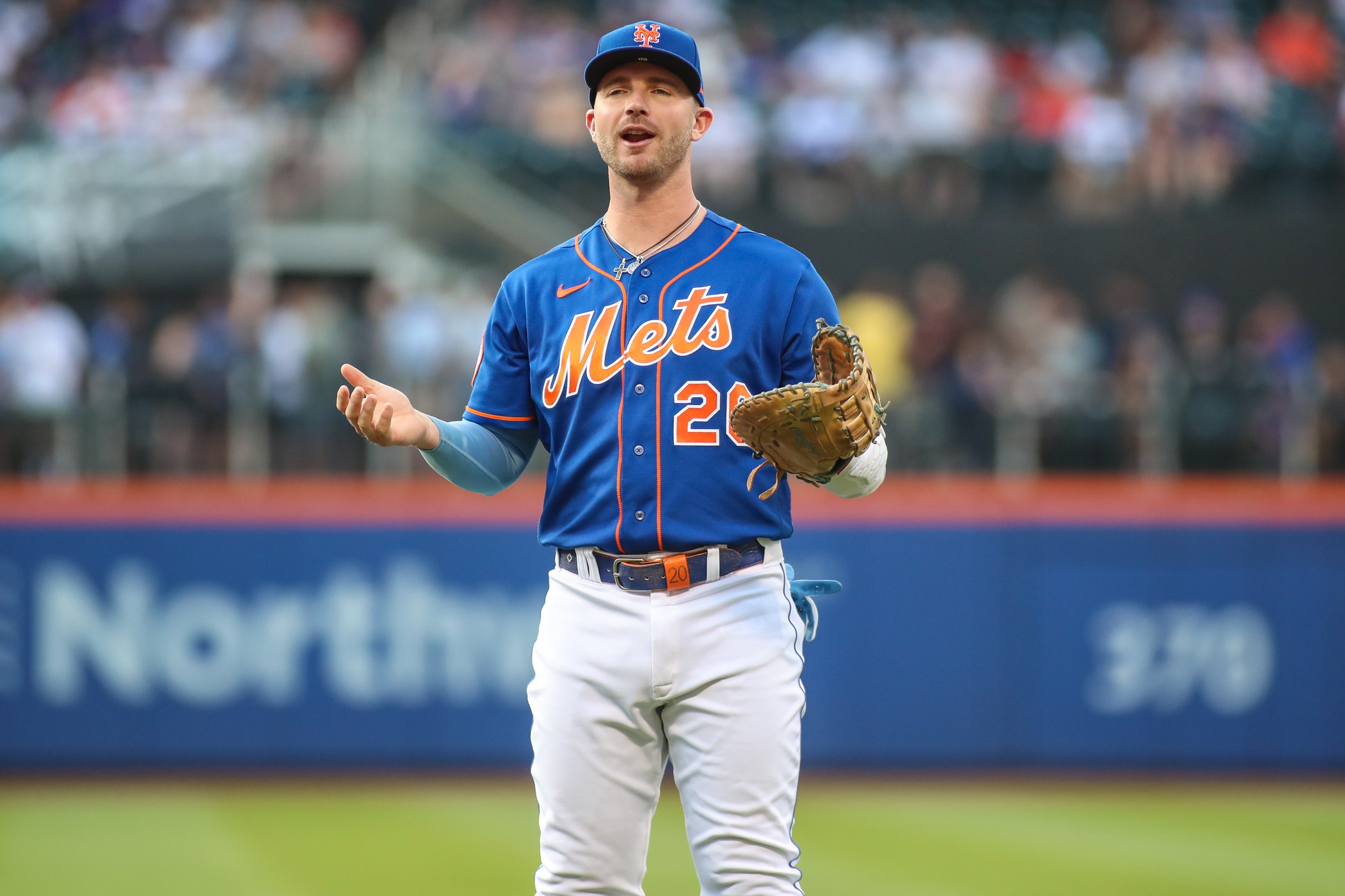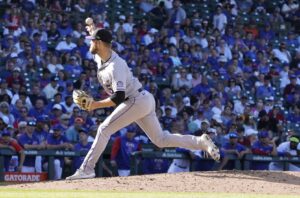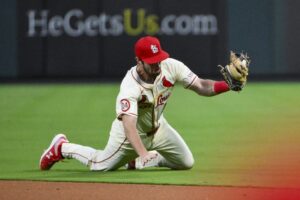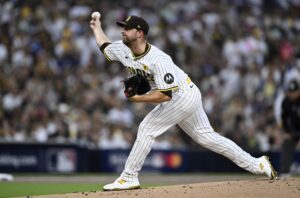Despite being on pace to be one of the best hitters in team history, the New York Mets should possibly explore trading Pete Alonso this offseason. The Mets made it clear that anyone not signed beyond 2024 might be traded. This has led many to wonder about star first baseman Alonso’s future. It may have been shocking for New York even to consider not making the former Rookie of the Year a Met. While Alonso is one of the faces of the franchise and will enter his final year of arbitration before he becomes a free agent in 2025.
Why the Mets Should Trade Pete Alonso This Offseason
1. Contract Status Doesn’t Match Mets’ Timeline
In the offseason, Alonso signed a one-year, $14.5 million deal, a record for a first baseman in his second time through arbitration. Alonso is slashing .218/.312/.507 with 31 home runs, 77 RBI and 60 runs.
It’s likely that the Mets will acquire players on short-term deals that help them be competitive for a brief period. At best, the squad fights for a playoff spot and makes marginal additions at the trade deadline. If they’re looking to start truly contending in 2025 or 2026, then Alonso’s expiring contract does not fit the timeline.
The Mets should consider opening up talks for an extension soon than later. If the team feels the two sides aren’t close to something, even at this time next year, then there must serious discussion for trade discussions during the offseason might be one to consider. Infusing the organization with young talent is the main goal right now.
If the Mets trade Alonso, it might be for a massive haul, depending on the offer. This deal could be a game changer for the chances of truly competing in 2025 and beyond.
2. Too Many Red Flags in Alonso’s Free Agent Profile
One aspect of efficient team building involves avoiding long-term deals for players with certain characteristics. Teams should avoid deals over five years for players over 30 who are already locked into a non-premier defensive position. Premier defensive positions include catcher, shortstop, second base, and center field.
Alonso’s free-agent years begin with his age-30 season. He already maxes out defensively as an average-at-best first baseman with limited athleticism. He will get heavier, slower, and less athletic as he ages. This means his future is at DH once he can no longer play first.
On the other hand, a shortstop like Francisco Lindor is athletic and can potentially slide to third, second, or corner outfield spot if he ages out of shortstop. This type of player/contract offers more defensive options and value as he ages. An old Alonso does not project to have anywhere close to this value from a defensive standpoint.
Alonso must continue slugging 35-40 homers per year to get good value out of the deal. That’s a lot to expect from an aging player. Alonso’s Hard Hit percentage and Average Exit Velocity are down in 2023 compared to 2022. Next year will be telling to see if this is the start of a trend or a result of a bad, injured year.
Having a slugging versatile player making big money restricts roster and payroll flexibility. There’s a real chance that Alonso, 29 in December, will never have more value than he does right now. The Mets must decide if they want to cash in now or hope he proves to be an elite slugger that ages well enough.
3. Replacement Options are Available
Trading Alonso before the 2024 season, one which will act as a transitional period for the organization, allows the Mets to see what they have in a player like Mark Vientos. Like Alonso, Vientos is a slugger with limited defensive ability probably best suited for first. However, the Mets can’t find that out with Alonso locked into the position.
It seems Vientos will finally get a chance to play almost every day down the stretch. He’s hit better since being called back up in mid-July but has struggled at third base in limited action. Part of a transition year involves learning what you have in young players. Vientos can earn an extended look next season if he hits well the rest of the year. If Alonso plays first, Vientos likely takes up most of the DH at-bats. It’s possible the Mets would rather have the DH spot free to rotate players.
Additionally, 2021 fourth-round draft pick JT Schwartz has a .815 OPS in 35 Double-A games this season. He’s not hitting for power like a typical first baseman, but he will likely start in 2024 at Triple-A Syracuse. If the lefty continues to develop, he could reach the majors in the second half.
Garrett Cooper, C.J. Cron, Rhys Hoskins, and Donovan Solano are right-handed options that won’t require more than two years and might have trade value. The Mets could also acquire a prospect by trading for a first baseman and absorbing his salary. These options include Josh Bell, Evan White, or Jake Cronenworth.
Photo Credit: © Wendell Cruz-USA TODAY Sports
Players Mentioned:
Pete Alonso, JT Schwartz, Garrett Cooper, C.J. Cron, Rhys Hoskins, Donovan Solano, Josh Bell, Evan White, Jake Cronenworth.






